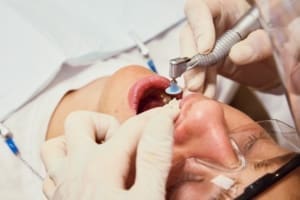In addition to brushing and flossing twice a day, you should have a dental cleaning every six months. The hygienist uses specialized tools and methods to clean teeth. Calculus, tartar, and even stains can be removed by the hygienist.
Contrary to popular belief, dental cleanings help prevent tooth decay and gum disease. Gum disease can be avoided and treated with preventative dental care and regular cleanings.
Read on to discover how regular dental deep cleaning can help you prevent gum disease.
Understanding the Vital Role of Hygienists
Even with the most modern electric toothbrush, plaque will remain on your teeth after you brush them at home. Plaque solidifies on specific teeth over time, generating thick white patches that are not only bad for your smile but also bad for your gums. Calculus, or hardened plaque, cannot be removed simply by brushing and flossing. Only dental tools are capable of removing tough plaque and tartar. Calculus damages gum tissue, causing gingivitis and periodontal disease if left untreated.
The hygienist will use scalers to remove calculus and tartar. This reveals the gum tissue beneath, allowing you to brush and floss plaque-infested areas at home. You may detect white patches on your teeth if it has been a while since your last dental cleaning. Professional teeth cleaning, fortunately, can remove any plaque accumulation. Calculus removal may also help with bad breath.
The Impotence of Detecting Gum Disease Early
You can maintain your teeth and gums healthy by visiting the dentist twice a year. Your hygienist will spot gum disease early on when they inspect your gums. Gingivitis is reversible, and gum disease is easier to treat in its early stages.
If your gums are swollen, inflamed, or bleed when you brush or floss, schedule a dental exam. The first step in regaining control of your oral health is to schedule regular dental checkups and cleanings.
How to Improve Oral Hygiene with Biannual Dental Checkups
A professional evaluation and cleaning are included in dental cleanings. During a dental cleaning, the hygienist eliminates plaque, tartar, and discoloration. To remove plaque and debris, the teeth are polished and flossed.
The hygienist measures the gums in addition to cleaning each tooth. Gingivitis and gum disease causes small gum pockets around the teeth. These gum pockets increase as the condition progresses, allowing plaque, bacteria, and debris to lodge between the gum tissue and the tooth. As a result, gum disease, tooth loss, and bone loss occur.
Measuring gum pockets at work is quick, simple, and safe. Gum disease may be evident if the depth of the pockets surpasses 3 mm. Gingivitis, if diagnosed early, can be reversed before it progresses to gum disease. Measuring gum pockets can assist patients with undetected gum disease in developing a personalized treatment plan to save their teeth and enhance their gum health.
Conclusion
Dental cleanings are beneficial to more than just the teeth. Dental exams every two years are critical for recognizing gingivitis and gum disease and maintaining a healthy mouth and teeth. While gum health has an impact on your smile, gum disease prevention can help you avoid inflammation, and tooth and bone loss.
The best approach to keep your teeth and gums healthy is to have a biannual dental exam. A competent hygienist will clean your teeth and inspect your gums twice a year to monitor and detect signs of gingivitis or gum disease. With this, you can also have a treatment plan for dental health issues.
Are you in need of dental cleaning soon? Northampton Dental Specialists Group offers decades of professional dental experience. With us, your oral health will be at its best. Give us a call today to learn more!





